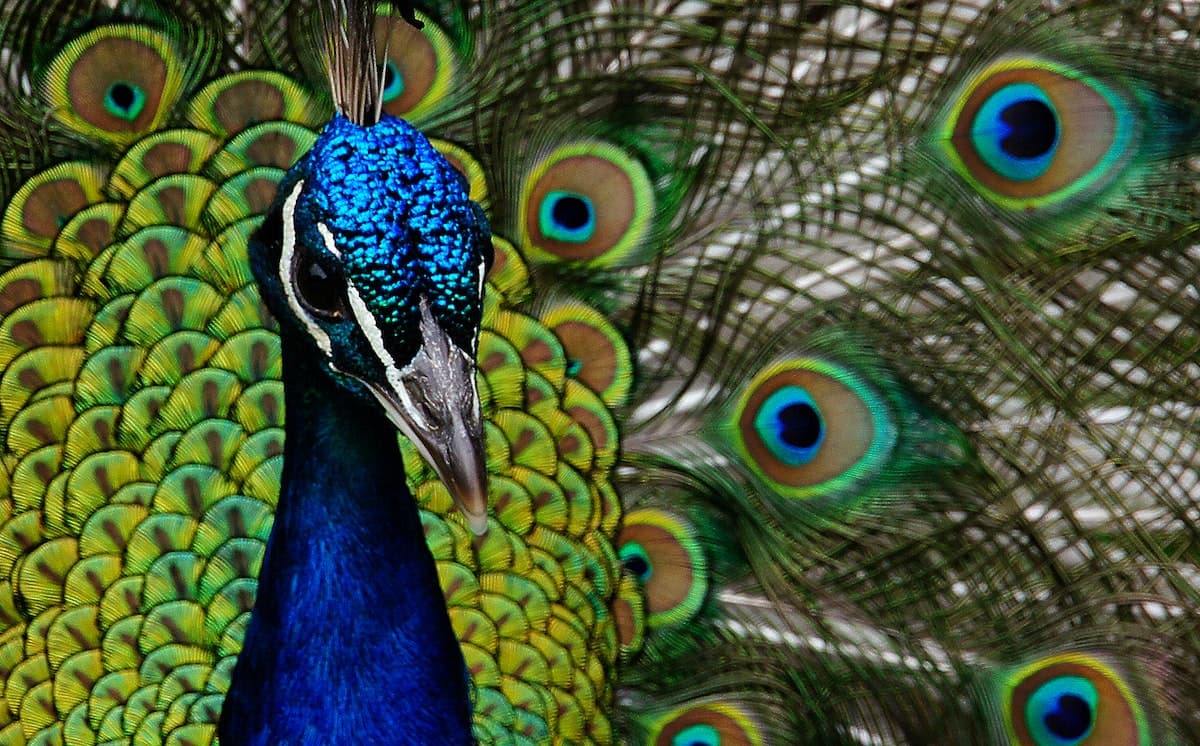What makes me so proud about my country is the good number of vulnerable animals that are present nowhere else but here. It simply means their population is not found anywhere else besides my country. It is good because that gives some hope that there is a chance of their population increasing in the future. Currently, there are 14 vulnerable animals in the world that are still present in Cambodia. Let’s take a look and see what they are below with me.
Asian Elephant (ដំរីអាសុី)
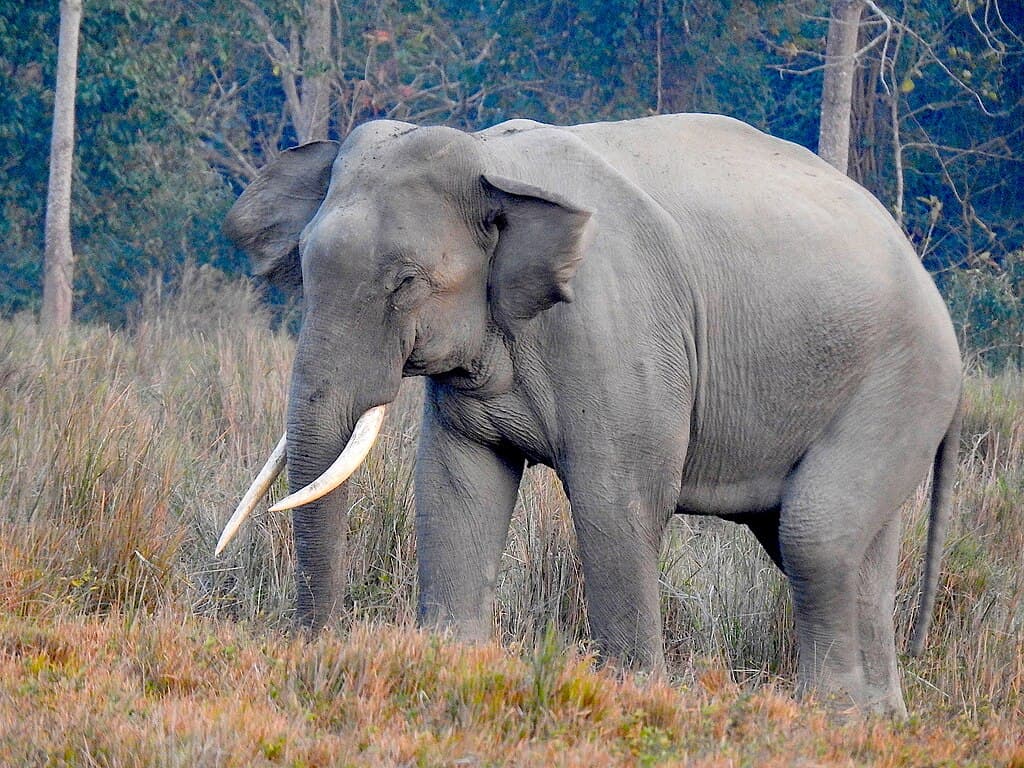
The largest population of Asian elephants in Indochina occurs in Mondulkiri province, Cambodia. Currently, the estimated number of wild elephants in Cambodia is between 400 and 600. A majority of them are in the Cardamom Mountains in southwestern Cambodia and in the eastern plains of Mondulkiri province. Those areas consist of grasslands, moist deciduous forests, semi-evergreen forests, and tropical evergreen forests that are perfect habitats for Asian elephants.
Asian elephants are extremely sociable, and they live in small groups of six to seven related females led by the “matriarch”. A matriarch is the oldest female in the group, and she is also the head of her herd. The matriarch usually leads the herd to areas with food that everyone can feed before moving on. Usually, Asian elephants feed on grasses but they also eat large amounts of bark, leaves, roots, and small stems. If they come across human agriculture or vegetable fields, they also sometimes feed on bananas, rice, and sugarcane. No matter how much or how far they move, they are always close to a source of fresh water. Simply because they drink up to 50 gallons of water a day so water is very important for them.
Possible threats are encroachments of agriculture and human settlement into forest areas and poaching of male Asian elephants for ivory. Another thing is when people use snares to hunt animals such as deer and pigs. Young elephants have been killed by wire snares set in the forest, and it greatly threatens the elephant population.
Banteng (ទន្សោង)
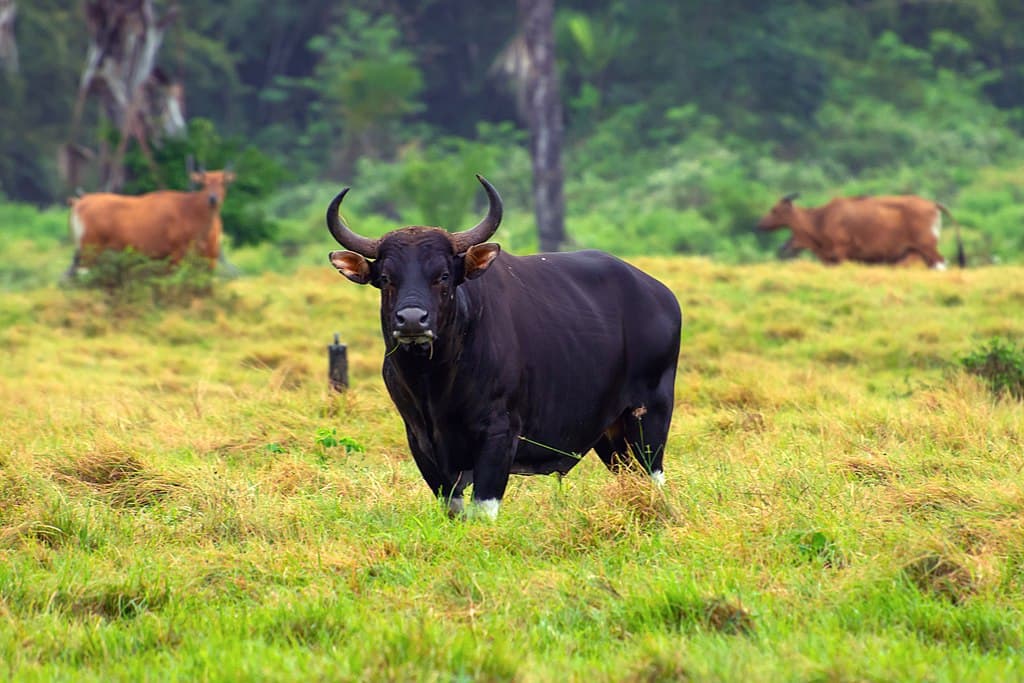
Also goes by another name Tembadau, banteng was the second endangered species to be successfully cloned. These herbivorous wild cattle feed on bamboo, fruits, grasses, leaves, and shrubs. However, their diet changes seasonally because grass is more abundant in the dry season while herbaceous plants are plenty in the monsoon. Banteng inhabits bamboo jungles, deciduous forests, dense forests, evergreen forests, open clearings, open deciduous forests, and secondary forests.
The interesting thing about banteng is that a male will lead a herd of females, and he breeds with all of them. He will not allow other males to mate with the females in his herd. A herd of banteng can be anywhere from 2 to 40 members with only one male, led by a female. As for old bulls, they tend to be solitary. Naturally, banteng are active during the day but they are primarily nocturnal where humans have encroached on their habitats.
According to WWF’s research in 2011, there are between 2,700 to 5,700 individuals in the northeast part of Cambodia. Meanwhile, the estimated global population is between 5,900 to 11,000 individuals so Cambodia has a large population of banteng. It is true that Cambodia has the largest banteng population in the world, but the population of these ungulates is now at risk.
In just 12 years, now the population of banteng in Cambodia is around 400 which is a huge decline. Poaching, illegal hunting with dogs, snaring, and rapid habitat loss have affected their numbers greatly. Poaching is one of the threats while large-scale land concessions have put banteng population into a serious decline. Their natural habitats slowly become sites for agricultural concessions and large infrastructure projects.
Bengal Florican (ខ្សឹប / ទ្រមាក់អណ្តើក)
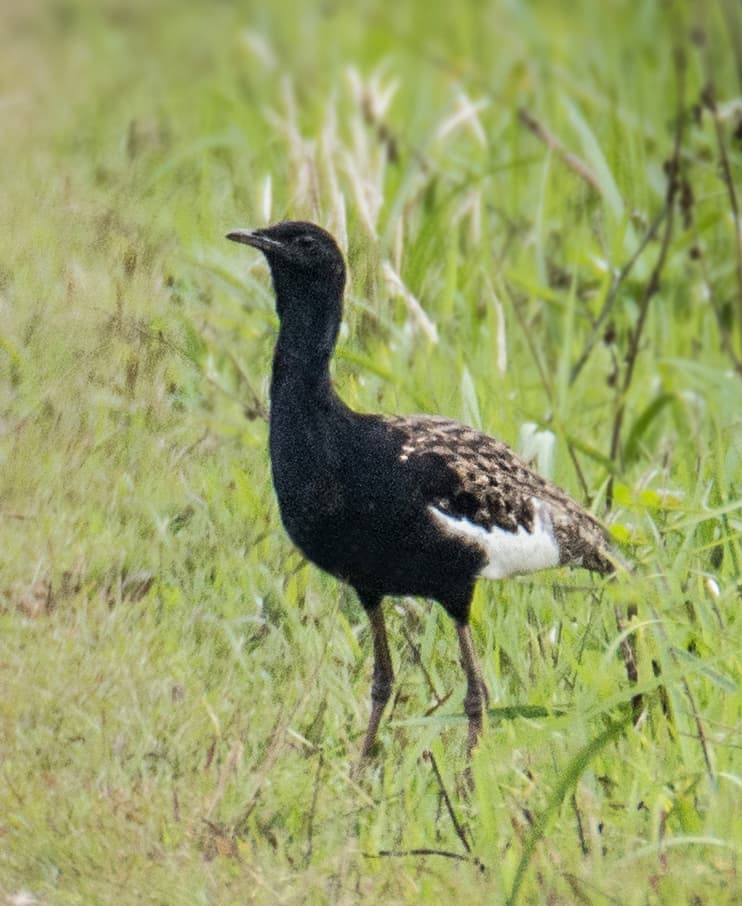
I honestly have never heard of this bird in my life, and this is my first time reading and writing about it. A male Bengal florican is black with a speckled brown back and white wings. As for a female, she is intricately patterned in buffy brown all over. These birds are solitary but also in a society sometimes, and they come together during the breeding season from March to May. They use grasslands near the lake to breed, and move away when the breeding grounds are flooded. As omnivores, these birds feed on flowers, fruits, seeds, beetles, lizards, and snakes.
According to my research, Bengal Florican resides in the central areas of Tonle Sap Great Lake’s grasslands in Cambodia. Specifically, there is a place called Florican Grassland located 85 kilometers southeast of Siem Reap which is the home to these birds. Florican Grassland are the protected areas within a local community full of floodplains and grasslands that are beneficial for Bengal florican. Florican Grassland is also home to other bird rare species. Those include the eastern marsh-harrier, greater spotted eagle, imperial eagle, Manchurian reed-warbler, red avadavat, Sarus crane, Siberian ruby throat, and small buttonquail.
Being of the world’s rarest bird species, these large grassland birds are Critically Endangered due to rapid habitat loss and hunting. Cambodia also built the world’s first Bengal florican breeding area to increase their numbers. There are around 800 Bengal floricans in the world, more than half of which are in Cambodia nowadays.
Black-Shanked Douc (ស្វាកន្ទុយស)
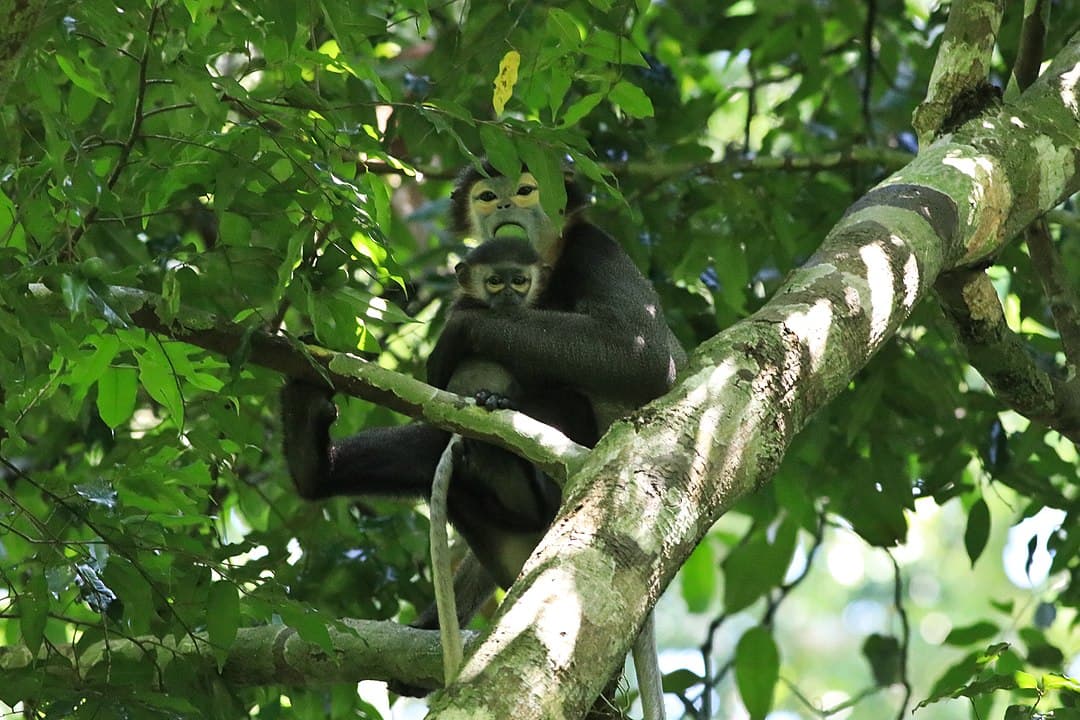
The black-shanked douc is one among the 3 species of douc, one of the vulnerable animals thriving in Cambodia. It is a vulnerable species that is found mostly in the forests in the eastern part of Cambodia. These primates inhabit evergreen forests, primary and secondary monsoon forests, and rainforests in mountainous areas, usually in the middle to upper canopy. The beauty of this species is very recognizable, with the bluish face and yellow rings around their eyes. The most fascinating parts? Males have blue scrotum and pink penis.
Where they live, they usually feed on leaves but their diet does change from dry to rainy season. When the wet season comes, black-shanked doucs also feed on buds, flowers, fruits, seeds, and shoots as well. The black-shanked douc can live in groups of 3 to 35 members, depending on the habitat and level of human disturbance. The bigger the group, the more the males. When the home ranges overlap, opposing males in foraging groups threaten one another by slapping their hands against their thighs. Blank-shanked douc is not vocal, they use facial expressions and postures to convey their intent or mood. They will only break their silence when they perceive a threat by emitting loud alarm calls or barks to alert others.
When it comes to the vulnerable animals around the world that are thriving in Cambodia, these primates are doing great. According to the Wildlife Conservation Society, there are almost 42,000 individuals in Cambodia’s Keo Seima Wildlife Sanctuary. Meanwhile, there are only around 500-700 individuals in Vietnam. While thriving, these primates also face threats including climate change, fragmentation, habitat loss, and illegal poaching.
Eld’s Deer (រមាំង)
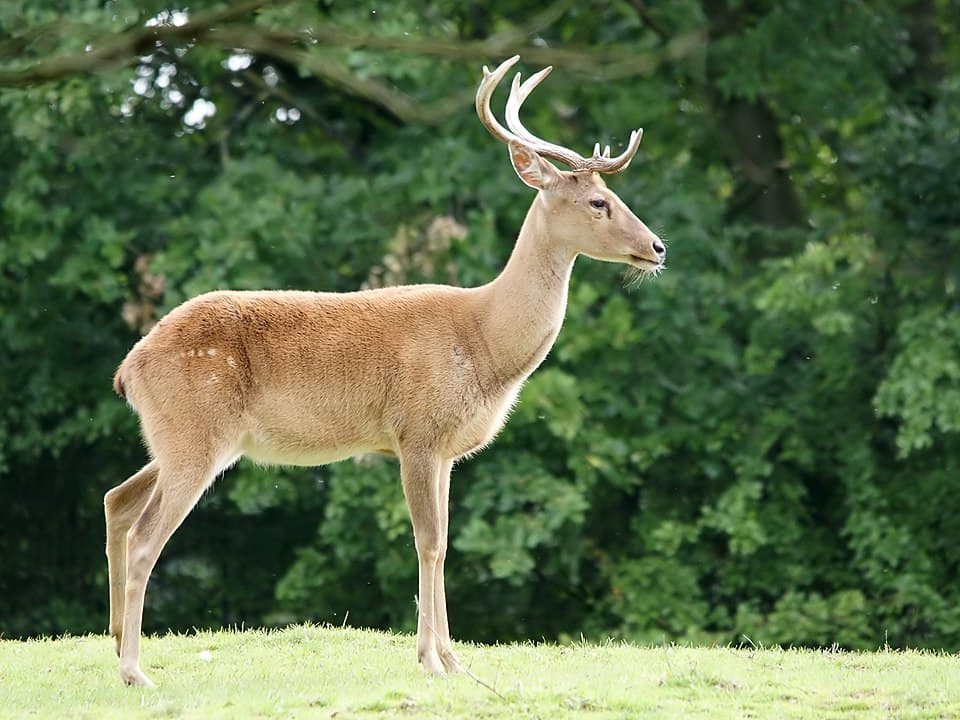
Eld’s deer is one of the rarest large mammals in Cambodia, standing as tall as 125 centimeters. While being medium-sized, this deer species has very long antlers, growing up to 99 centimeters in length. As for the habitats, Eld’s deer prefer dry and open forests that have abundant food. Their diet consists of fruits, grasses, herbaceous plants, shoots, and wetland plants.
Female Eld’s deer generally roam alone or in pairs with their young, and males also move around by themselves. They only come together during the mating season in herds of up to 50 individuals. The males will compete with each other to gain control of a harem of females during the rutting.
Though hosting the most population of Eld’s deer, there are still threats that harm their numbers in Cambodia. Some significant threats are dog hunting, habitat loss, listing snaring, and trophy hunting. People also hunt them for traditional medicinal trade in Cambodia, Laos, and Vietnam. This is why Eld’s deer is listed as Endangered on the IUCN Red List.
Giant Ibis (ត្រយ៉ង)
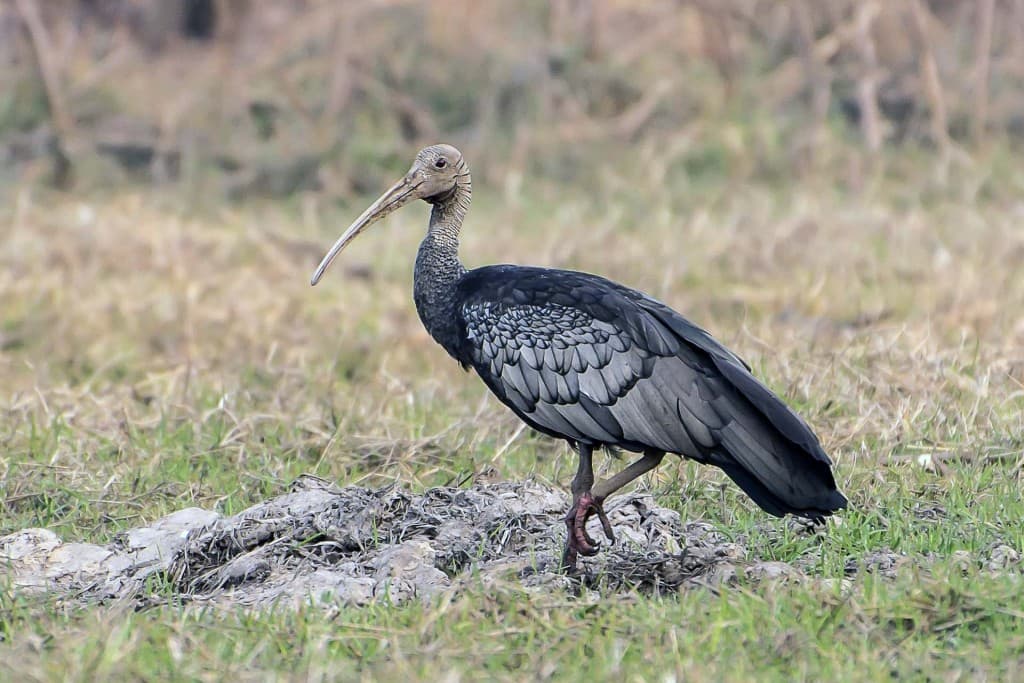
Here you are looking at Cambodia’s national bird, the majestic giant ibis. It is the largest extant ibis species, growing up to 106 centimeters tall. The habitats of these birds include flooded plains, lakes, marshes, semi-open forests, swamps, and other seasonal water meadows in denser deciduous forests. Being large and all, giant ibis has slow movement when searching for food. Their menu consists of crabs, earthworms, eels, insects like cicadas and locusts, small fish, snails, and reptiles.
While being the country’s national bird, the giant ibis population is still facing so many threats every day. Their population decline is a result of disturbance, habitat loss, hunting, and lowland deforestation. When it comes to habitat loss, the drainage of wetlands for cultivation and the epidemic clear-cutting of forests affect their habitats greatly. Some local people also hunt giant ibis for their meat while their eggs are under predation by other birds. This is why this poor national bird is considered to be Endangered on the IUCN Red List.
Fun Fact: According to traditional Khmer treatment, a giant ibis’ blood can be the treatment for malaria. I don’t know if that is true, but this is the belief.
Clouded Leopard (ខ្លាពពក)
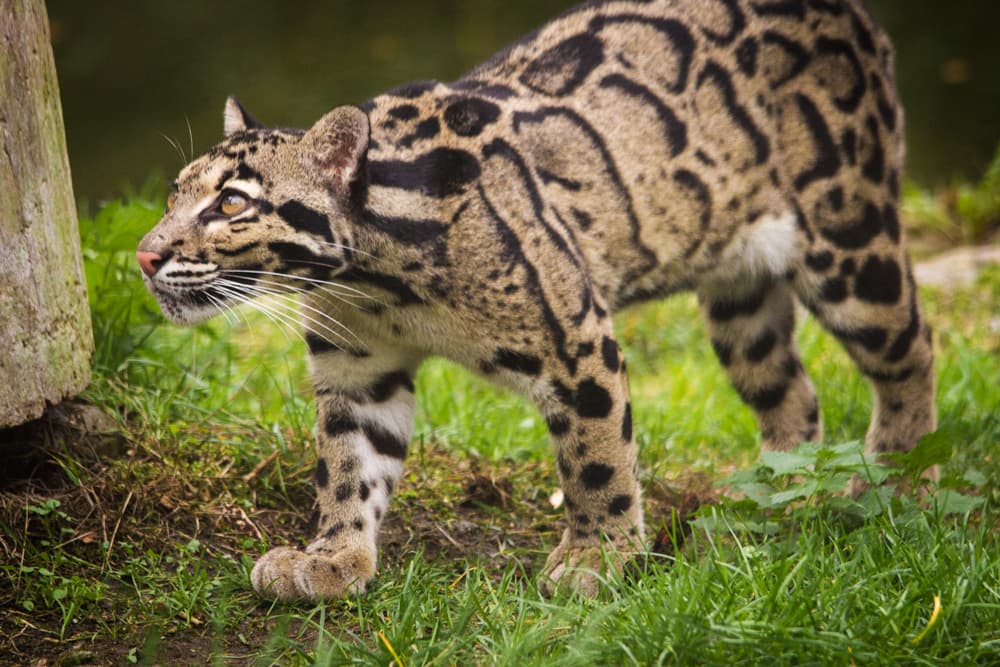
Clouded leopards are nocturnal and reclusive cats that spend most of their time up in trees. This medium-sized wild cat lives in dense forests and rainforests, no wonder why they are incredible climbers. On top of that, they can even hang upside down from branches using their large paws and sharp claws. The best part is that their powerful legs with rotating rear ankles that allow them to climb down trees head first. How cool, right?
All wild cats have a great reputation for being great hunters, and clouded leopards are one of those. They normally hunt on the ground, and their prey includes deer, primates, small mammals, and wild boar. Having the largest canine teeth (proportionate to body size) of any wild cat makes things so easy for them to hunt. In fact, their jaws and teeth are so strong they can take down prey much larger than themselves without a problem. Not to mention that they can open their mouth up to 100 degrees, they are fearsome predators.
The population of these wild cats is threatened by commercial poaching for the wildlife trade and large-scale deforestation. Their body parts, especially fur are used for clothing and decoration. Clouded leopards was listed as Vulnerable on the IUCN Red List since 2008.
Gaur (ខ្ទីង)
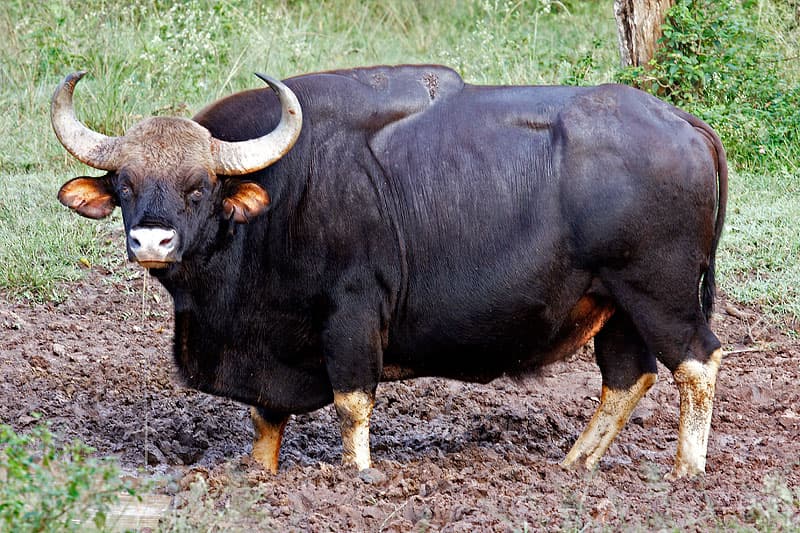
Gaur is the largest cattle species in the world, and they are one of the vulnerable animals that still live in Cambodia. An adult gaur can stand up to 2.2 meters tall, weighing up to 1,500 kilograms. In fact, they are so large they have very few predators; only saltwater crocodiles and tigers can kill an adult gaur. Meanwhile, dhole packs, leopards, and large mugger crocodiles attack unguarded calves on unhealthy individuals. Gaurs live in grassy open forests, and they feed on bamboo, grass, and shrubs usually in the morning and afternoon. They also live in evergreen forests, moist deciduous forests, and semi-evergreen forests.
In areas where disturbance is minor, gaurs are generally shy and timid. However, they can be aggressive and bold when human presence is common. Bulls may charge without provocation, especially during summer when intense heat and parasitic insects make them more short-tempered.
Due to the global population decline in the last half of the 20th century, gaurs are classified as Vulnerable on IUCN Red List. Across their range, the main threats to their population are not difficult from other vulnerable animals on the list. People hunt them for horns, meats, and trophies, and habitat loss also plays a part. More than that, they also die from diseases spread by domestic cattle.
Gaur is classified as “rare” wildlife in Prakas No, 020 of the Ministry of Agriculture, Forestry, and Fishery. Therefore, they are under protection from offenses such as catching, causing injury, hunting, killing, poisoning, trapping, and other forms of harm. Whoever poses any harm to them shall carry a penalty of 1 to 5 years imprisonment and/or a fine from $4,000 to $40,000.
Greater Adjutant (ត្រដក់ធំ)
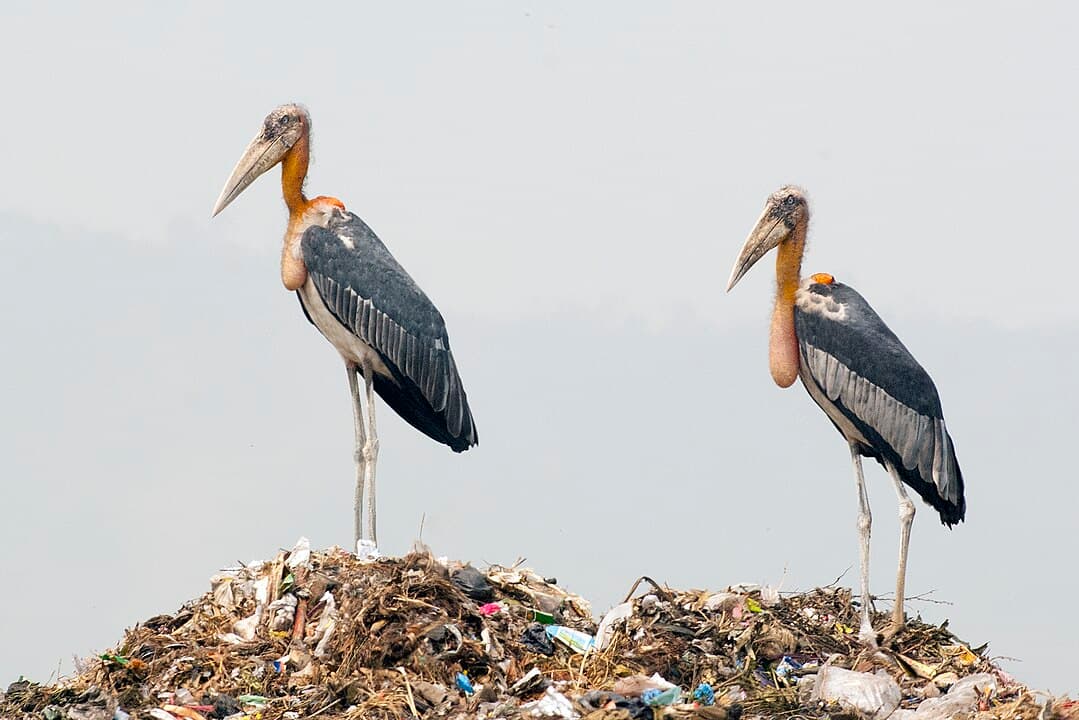
Greater adjutants are the Asian cousins of the African marabou storks, and they share many similarities with each other. These large storks stand as tall as 150 centimeters, with a huge bill at an average of 32.2 centimeters. The size of that bill allows them to easily attack wild ducks within reach, swallowing them whole as well.
Normally, greater adjutants feed on small aquatic and terrestrial wildlife such as birds, frogs, insects, reptiles, and rodents. However, they will also eat carrion and scavenge carcass dumps and human waste at burial grounds, rubbish dumps, and slaughterhouses. Their common habitats are fields, grasslands, lakes, marshes, mangroves, paddies, stagnant pools, and swamps; where they can feed and nest. They usually lead a solitary life but they can also live in small colonies, sometimes near human settlements.
Greater adjutants are the second rarest stork species, and they are considered Endangered on the IUCN Red List. The population of these storks steeply declines due to many reasons. The common threats are direct exploitation at nesting colonies, global climate changes, habitat destruction, over-exploitation of wetlands, and wetland pollution. Apart from India, Cambodia is the only breeding site for these birds. Two-thirds of the Cambodian population congregate in the Tonle Sap Biosphere Reserve. The others remain in areas of dry forests in the northern plains and possibly along the Mekong mainstream north of Kratie province.
Hairy-Nosed Otter (ភេរោមច្រមុះ)
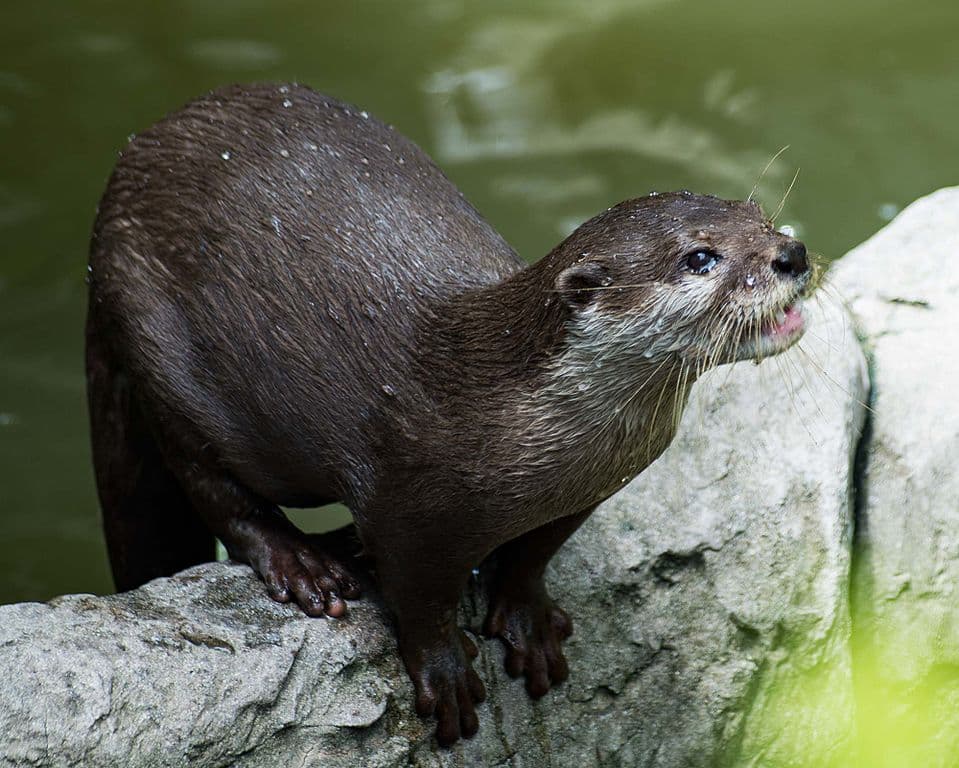
Not so common in the otter world, the hairy-nosed otter is one of the world’s rarest and least known otter species. This otter species occurs in countries in Southeast Asia including Cambodia, Indonesia (Borneo & Sumatra), Malaysia, Thailand, and southern Vietnam. In Cambodia, this otter resides in lowland flooded forests and scrubs around Tonle Sap Lake. However, they also occur in coastal areas as well as on larger inland rivers. And similar to other otter species, hairy-nosed otters either live in solitary or in groups of up to 4. They will come together in the breeding season from November to March.
Hairy-nosed otters are found in 4 provinces in Cambodia including Battambang, Kampung Thom, Koh Kong, and Mondulkiri. Hairy-nosed otters are active at night, they feed on a wide variety of food such as crustaceans, fish, mollusks, and water snakes. When the dry season comes, they will forage in drainage canals and ponds instead.
Being the rarest otters in Asia, these vulnerable animals have a high risk of going extinct. Currently, this species is classified as Endangered on the IUCN Red List. The threats to their population are accidental killing during fishing, hunting for fur and meat, and loss of lowland wetland habitats. In Cambodia, all otter species are facing threats including food loss, habitat destruction, illegal wildlife trade, and persecution as pests.
Green Peafowl (ក្ងោកបៃតង)
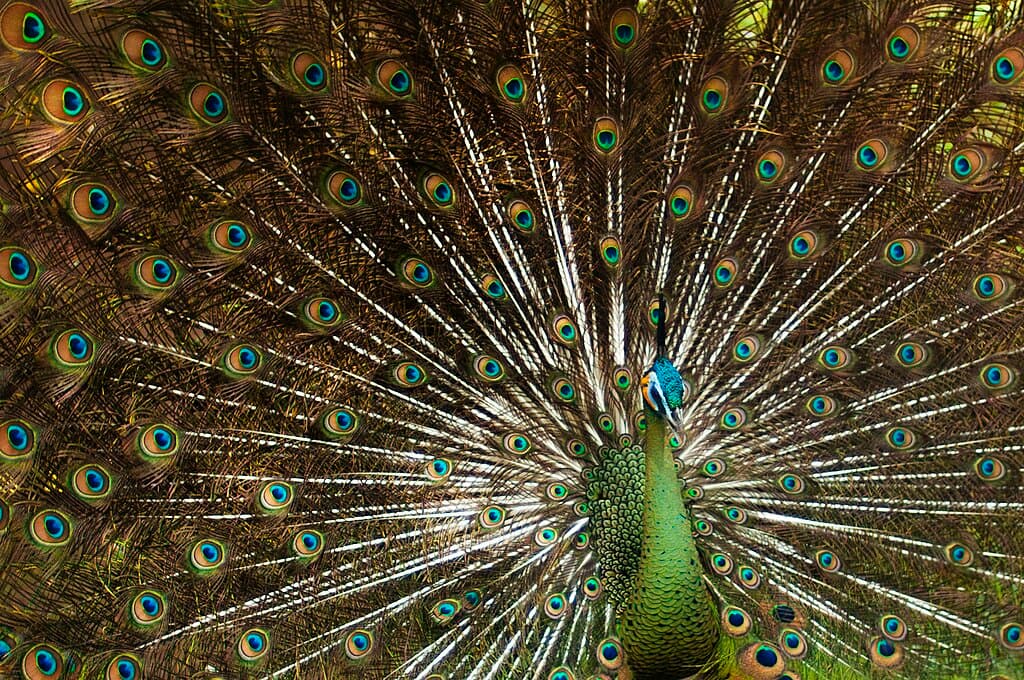
Everybody knows peacocks, there are no other birds with such graceful plumage and large magnificent tails. Green peafowls, on the hand, are one of the most iconic birds in Cambodia. Both male and female green peafowls have long upper tail coverts that extend up to 2 meters in males. The eyespots on the tail are the most attractive features besides their striking iridescent green breast and neck feathers that resemble dragon scales. This beautiful bird species lives near permanent water sources in dry deciduous forests, riparian forests, and semi-evergreen forests.
Green peafowls are able to fly for up to a mile though it is not common. These birds also fly to avoid danger and threats, cross obstacles like rivers, or fly up into trees to roost at night. They can fly from their deep forest roost to feeding sites along the river banks and marsh pastures. Their natural diet consists of fruits, insects, reptiles, seeds, and small animals. Besides flying, they are also strong walkers with powerful legs that allow them to walk up to 4 kilometers per day. In case food sources are available nearby, they simply forage for food on the ground instead of flying.
Cambodia is believed to have one of the largest peacock populations in Asia as the number keeps increasing. However, green peafowls do not have the same fortune when it comes to their population. While green peafowls are classified as Endangered on the IUCN Red List, and hunting is their main threat. People hunt them for feathers, meat, and pet trade while habitat fragmentation also plays a part in their decline.
Leopard (ខ្លារខិន)
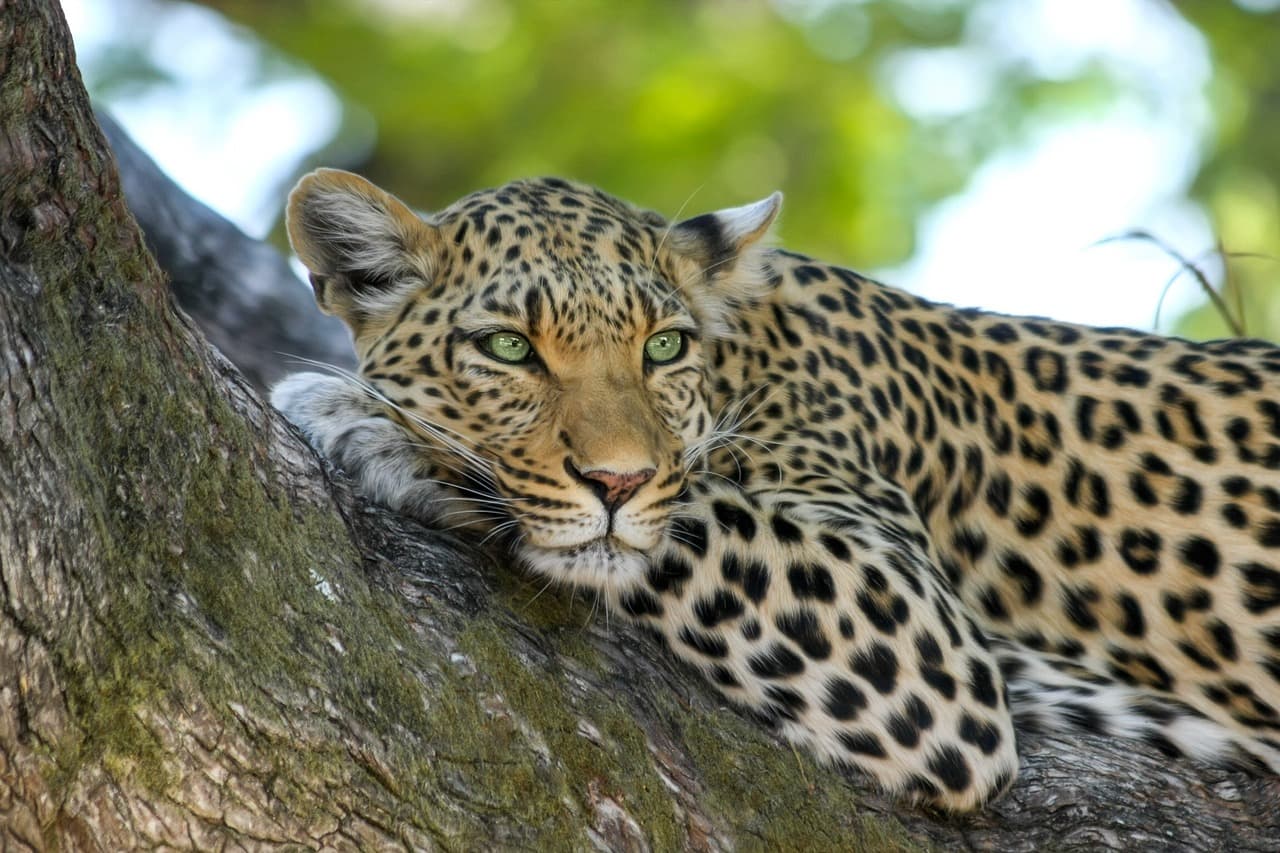
The almighty leopards are rare wild cats in Cambodia, and they are under the protection of the law. Their ability to camouflage is one point, they are fast and stealthy with sharp claws and teeth and strong jaws. How fast are leopards, you may ask. They can run up to 58 kilometers per hour, with the ability to leap 6 meters forward through the air. Not to mention their acute senses and powerful bodies, they are one fascinating wild cats. With that said, being the smallest in the big cat family does not make them any less fearsome.
Leopards are one of the wild cats with both the ability to climb trees and swim. This wild cat species lives solitarily, and the only time you see two leopards together is when they come together to mate. Leopards live in dense and dry forests where they usually hunt at night, and they carry the prey into trees to eat. The menu consists of deer, monkeys, and pigs, and the hunting method is ambush. Leopards are so strong they can take down banteng, a wild cattle that is way larger than them.
We were once the last country with a viable population of leopards, but they are now also disappearing. The population of leopards in Cambodia was sparse, and they could be found in the north, northeast, and southwest of the country. Leopards are one among the vulnerable animals that are listed on the IUCN Red List as Critically Endangered. They are already extinct in Singapore, and likely extinct in Laos and Vietnam also. The steep decline in the population is due to deforestation and human encroachments (snaring and poaching). Illegal trade for their bones, coats, skin, and teeth has affected their population greatly.
Vulture (ត្មាត)
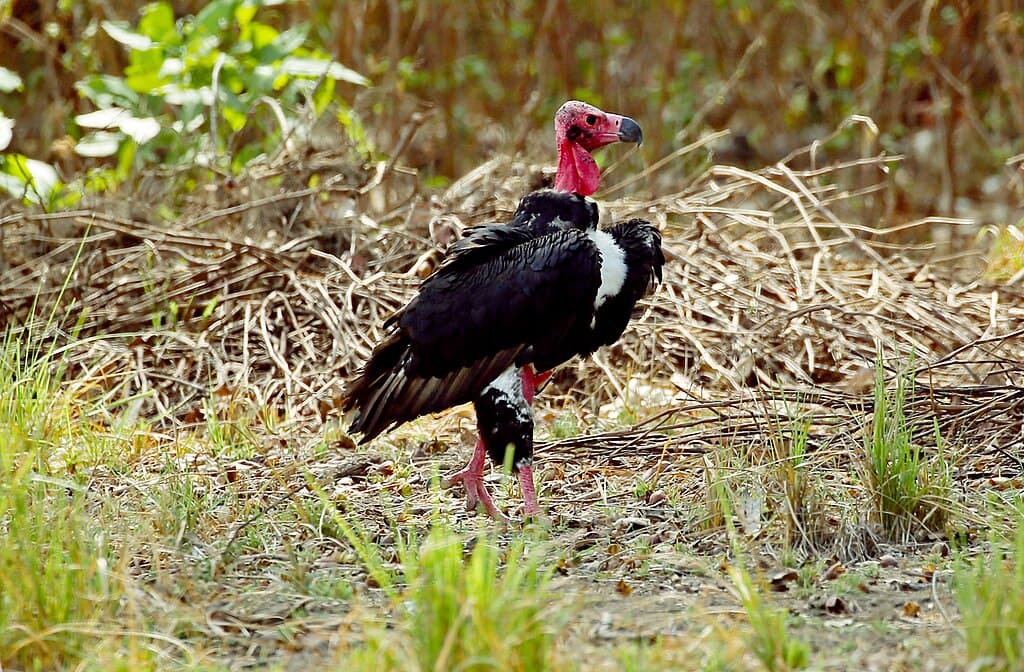
There are only 3 species of vultures in Cambodia, and the population of each species is all below 150 individuals. The 3 species include the red-headed vulture, slender-billed vulture, and white-rumped vulture, and they are all facing dramatic declines. The main threats to their population are disturbance, habitat loss, halting trapping, hunting, and pollution. In the past few years, many vultures died of poisoning after the introduction of Diclofenac. This drug is for cattle treatment but it causes poisoning to vultures that feed on the carcasses of those cattle. The poisoning alone leads to a decline of 90% of the population within half a decade.
Yellow-Cheeked Gibbon (ទោចថ្ពាល់លឿង)
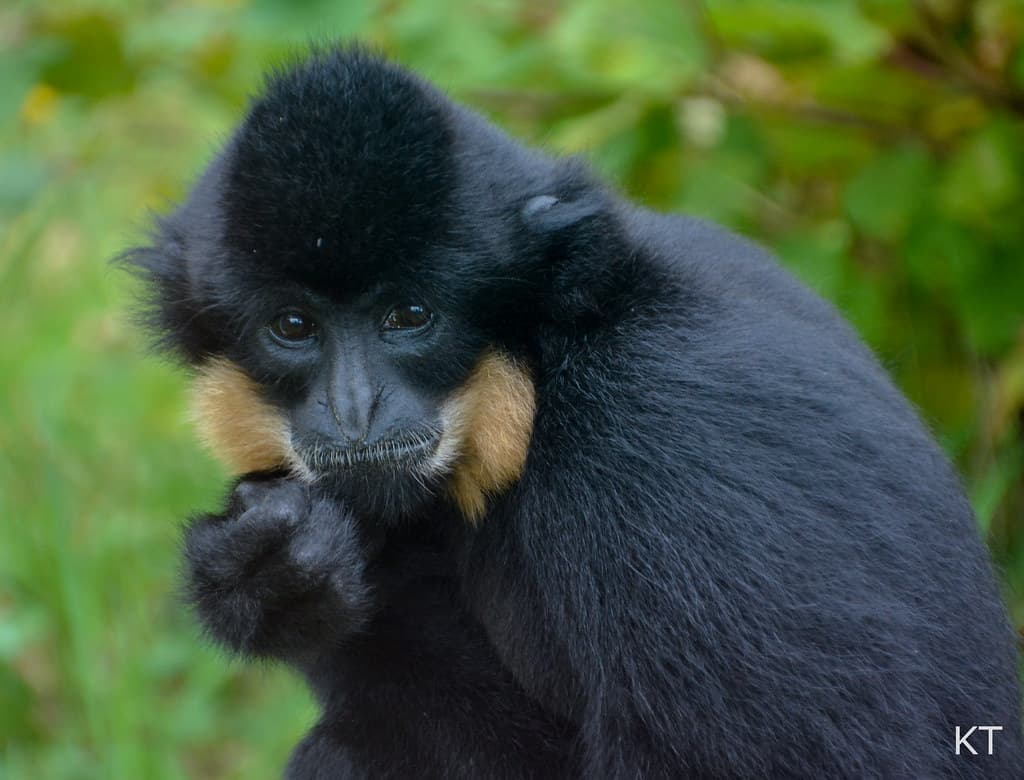
This primate goes by many names such as buffed-cheeked gibbon, golden-cheeked gibbon, golden-cheeked crested gibbon, red-cheeked gibbon, and yellow-crested gibbon. They are a gibbon species native to Cambodia, Laos, and Vietnam. This species is born blond and turns black later. The males are overall black with golden cheeks while the females are born blonde but turn black later. Females turn back to blond when they reach sexual maturity, with only black fur on the top part of their heads.
Buffed-cheeked gibbons prefer evergreen forests and wet lowlands where they can live high in the canopy. That allows them to not only easily access seasonal fruits but also be safe from predators. They usually feed on flowers, leaves, and shoots but also bird eggs and insects when ripened fruit is scarce in the dry season. Golden-cheeked gibbons spend the day feeding and locating food while the little ones play and parents groom each other or relax. These gibbons are very loud early in the morning, and there could be many reasons for that. It could be to defend resources such as food trees, partners, and territories, or to attract potential mates.
As for the population, there are more than 1,000 individuals in Keo Seima Wildlife Sanctuary. Forest degradation for farmland and human projects such as gold mining make their population extremely vulnerable. Today, other threats that they face are hunting for meat and to use in traditional medicines. People also capture young gibbons to keep or sell as pets, and they cannot survive living separately from their parents.
Related Post: Most Dangerous & Venomous Snakes In Cambodia
